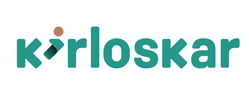There is no denying the fact that the commercial real estate space is quite fast-paced. Here, the efficiency of industrial spaces can make or break a business. Productivity is the heartbeat of success, especially in these dynamic environments. Industrial spaces’ layout, design, and functionality directly impact how efficiently tasks are carried out.
In this blog, we’ll unravel the secrets behind enhancing productivity with industrial space solutions. From innovative designs to fostering collaboration and prioritizing employee well-being, we’ll delve into understanding how these elements converge to elevate productivity, boost job satisfaction, and ultimately drive overall business triumph.
Ergonomic Design
Ergonomic design forms the bedrock of heightened productivity in commercial real estate, placing employee well-being at the forefront. Think of it as a tailored suit for the workspace – it fits just right. Ergonomic furniture, like adjustable desks and chairs, caters to individual needs, promoting comfort and reducing strain. Proper lighting, emphasizing natural light where possible, minimizes eye fatigue and enhances alertness.
Specialized ergonomic equipment, such as adjustable computer monitors and keyboard stands, ensures a workspace that adapts to the worker, not the other way around. This thoughtful design approach isn’t just about comfort; it’s a strategic move to diminish fatigue, prevent injuries, and create an environment where employees thrive.
Fostering Team Dynamics
Collaborative workspaces are the secret sauce for success in commercial real estate industrial settings. Picture this: open layouts that invite creativity, communal areas buzzing with ideas, and flexible meeting spaces that adapt to the needs of the hour. These elements aren’t just about aesthetics; they’re powerful catalysts for improved communication and teamwork.
An open layout erases physical barriers, making it easy for team members to share ideas on the fly. Communal spaces become hubs for impromptu brainstorming sessions, fostering a sense of camaraderie. Flexible meeting areas accommodate diverse work styles, ensuring that teams can collaborate seamlessly. These collaborative spaces are essential ingredients for a thriving industrial workspace where teamwork isn’t just encouraged, it’s woven into the very fabric of the environment.
Technology Integration
Welcome to the future of productivity in industrial space solutions, where technology takes center stage. Smart technologies, like sensors and IoT devices, are efficiency powerhouses.
Imagine automated systems that regulate temperature and lighting, creating the perfect work environment without manual adjustments. Automation extends to machinery too; think of conveyor belts and robotic systems that handle repetitive tasks, freeing up human resources for more complex challenges. Data analytics plays a starring role, providing insights into operational patterns, predicting maintenance needs, and minimizing downtime. It’s not just about being tech-savvy; it’s about making industrial spaces smarter, more responsive, and finely tuned for maximum productivity.
Adapting to Changing Needs with Flexible Layouts
Flexible layouts in industrial spaces are the strategic answer to the ever-changing demands of commercial real estate. Enter the realm of modular designs, where workspaces are constructed with adaptability in mind. Think of movable partitions that effortlessly transform a vast floor into segmented areas based on immediate needs. This modular approach allows businesses to customize spaces, creating specialized zones for various tasks with no major renovations.
Picture a warehouse that can quickly shift from storage to production setups as requirements fluctuate. These flexible layouts aren’t just about convenience; they’re about future-proofing industrial spaces, ensuring they remain agile and responsive to the dynamic nature of business operations.
Mitigating Noise for Improved Focus
Noise can be more than a disturbance; it’s a productivity hurdle waiting to be overcome. Innovative acoustic solutions, the silent architects of a more focused industrial workspace. Imagine soundproofing techniques seamlessly integrated into the very fabric of the environment, absorbing unwanted noise and creating a serene atmosphere. Strategically designed acoustic panels, constructed with materials like foam or fabric, become guardians against reverberations, ensuring that the hum of machinery doesn’t disrupt concentration.
Consider specialized flooring materials that dampen sound, reducing the impact of footsteps and machinery vibrations. These acoustic interventions are about minimizing noise; they’re precision-engineered tools to elevate focus and concentration in industrial spaces. This fosters an environment where productivity thrives amidst the hum of progress.
Wrapping Up
As the pulse of industry beats on, investing in productive and future-ready industrial spaces is the cornerstone of sustained success. Businesses thrive not just on machinery but on environments that prioritize employee well-being.
From ergonomic designs to collaborative spaces, technology integration, flexible layouts, and acoustic solutions, each element contributes to a harmonious symphony of productivity. Embrace the future by investing in spaces that not only adapt to change but actively foster the growth and success of both your business and the individuals propelling it forward.









